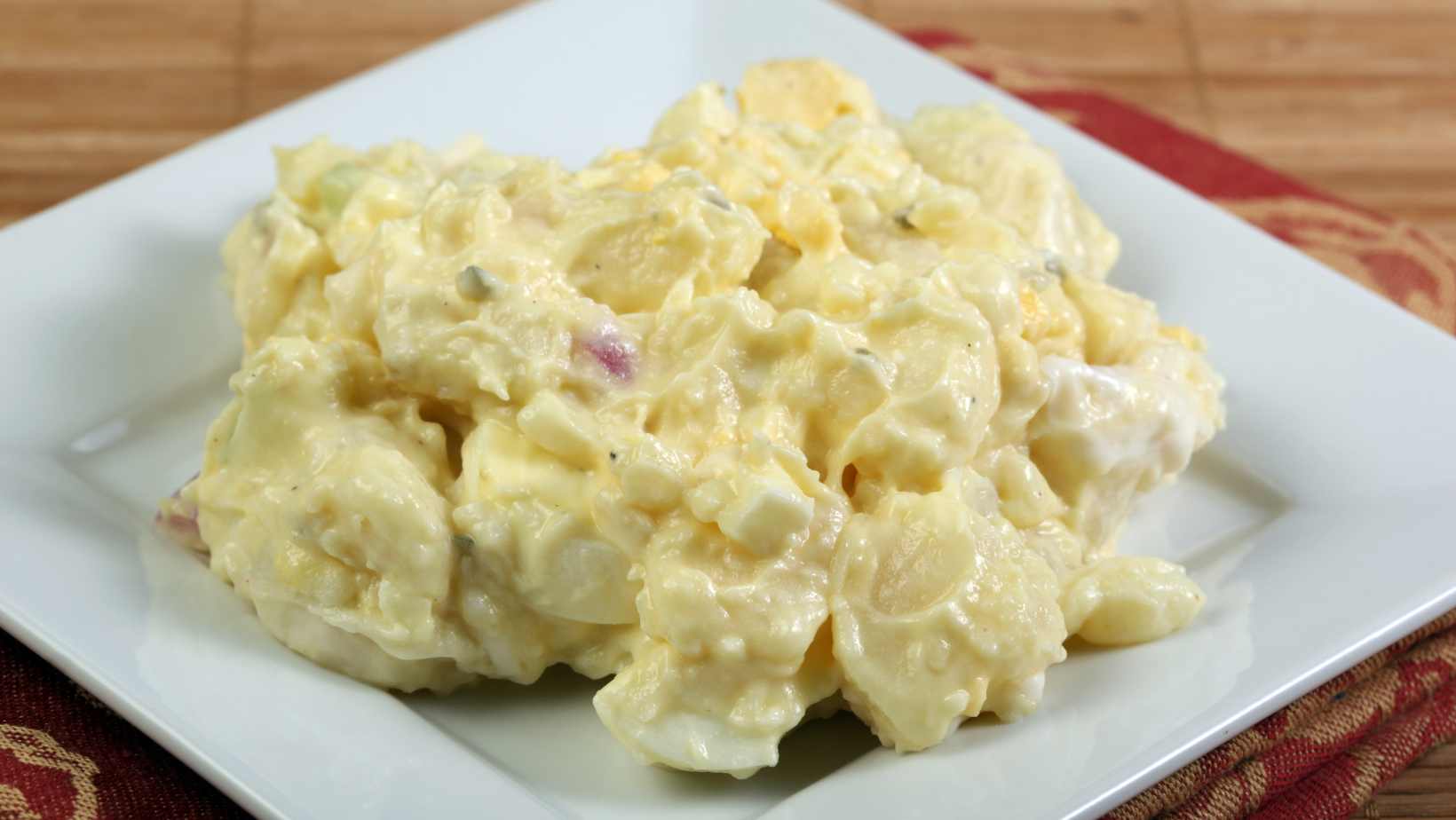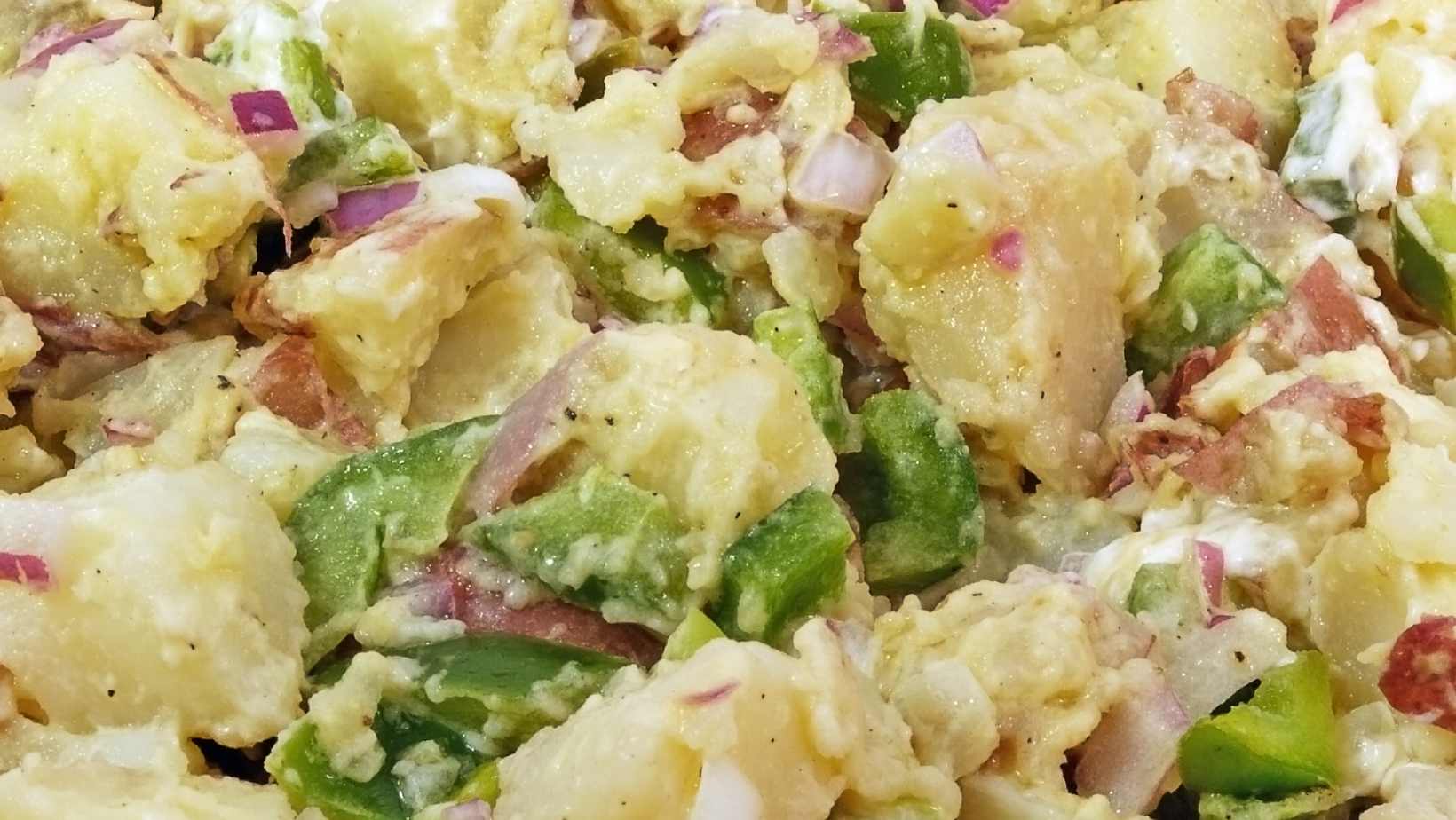Food contamination can cause big health issues. Bacteria, viruses and parasites are some of the contaminants that can enter our food and make us sick, like with diarrhoea or vomiting. Sources of contamination can include soil, water, air and humans. Cooking, refrigeration and hygiene are ways to help prevent foodborne illnesses.
Food left at room temperature for too long is a breeding ground for bacteria. Perishable foods like potato salad can quickly increase the risk of bacteria growing if left outside the fridge for more than two hours.
Pregnant women, young children and elderly with weakened immune systems are most at risk of foodborne infections. To reduce the risks of contaminated food like potato salad: always wash hands before cooking or eating; store food in airtight containers in the fridge below 4°C; don’t eat leftovers that have been out for over two hours; and reheat cooked foods well before consuming. Follow these measures to enjoy meals without infection-causing microbes. Keep food safe – stick to these guidelines!
How Long Can Potato Salad Sit Out
To ensure your food is stored safely, adhere to the rules for storing food with “The Rules for Storing Food Safely” section in “The Dangers of Bacteria, how long can potato salad sit out” article. This section will cover “The Danger Zone for Temperature”, “The Two-Hour Rule for Perishable Food”, and “The Four-Hour Rule for Non-Perishable Food” as solutions for safe food storage.
The Danger Zone for Temperature
The Temperature Necessary for Food Safety.
To prevent bacterial growth, the safe temperature zone for food storage is critical. This zone is known as the temperature danger zone and requires temperatures from 4°C to 60°C (40°F to 140°F). If food stays in this range for more than two hours, it can become dangerous to consume.

Let’s divide the zone according to the temperature:
| Temperature Range | Types of Food |
| Below 4°C (40°F) | Refrigerated perishable items like raw meat, poultry and dairy. |
| 4°C – 60°C (40°F – 140°F) | Don’t store food here for more than two hours due to bacterial growth. |
| Above 60°C (140°F) | Cooked food must be kept higher to dodge contamination from microorganisms. |
Remember that every food has its special storage needs and freshness timeline. For instance, raw meat needs colder temperatures while bread gets stale when refrigerated. So, storing food safely involves more than understanding temperature safety zones.
If you are anxious about how long your food will last, here are some tips to keep it fresh:
- Keep fresh produce at low temperatures.
- Put ripened fruits with ethylene gas-absorbing substance.
- Utilise vacuum sealing or airtight containers.
- Label and arrange received items by date.
By following these tips and being careful with high-risk foods, you can guarantee a safe food environment with longer freshness timelines. To avoid a stomach ache later, obey the two-hour rule.
The Two-Hour Rule for Perishable Food
When it comes to perishable food, keeping it fresh and safe is paramount. The “Two-Hour Guideline for Perishable Food” is key. This rule states that food should return to storage temperatures below 90°F within two hours. To ensure this:
- Discard food kept at 40°F or higher for more than two hours. Bacteria will grow quickly at this temp.
- If a dish is left outside in >90°F weather, discard after one hour.
- Move leftovers to the fridge or freezer in two hours (one if the temp is >90°F).
- Reheat & broth-based and sauces soups before serving – make sure they hit boiling point.
Ignoring this guideline can lead to bacteria growth, causing illnesses such as Listeria, Salmonella, Campylobacter & E.coli. The CDC says one in six US citizens get sick from contaminated food every year. Non-perishables can last for years. But, if my cupboard’s been holding something for over four hours, it becomes my emergency snack!
The Four-Hour Rule for Non-Perishable Food
Non-perishable food requires special attention for safe storage. Here’s the optimal way to store it:
- Room Temperature: Keep canned fruits, vegetables, and meats stored at 68-77°F for up to 3 years.
- Cool Temperatures: Low-acid canned goods like soups and stews last 2-5 years at 50-70°F.
- Best Before Date: Use food before its best-before date for optimal freshness.
- Storage: Keep the pantry dark to prevent light interaction with containers.
- Rotation: Keep track of what you have in storage. Rotate packages to use them before they go bad.
Plus, store dry goods in airtight containers away from pet foods and odours to avoid rodents and insects. And don’t forget to label food with purchase and opening dates to reduce waste and ensure proper nutrition.
Don’t forget: E. coli isn’t a winning flavour for potato salad!
How Long Can Potato Salad Sit Out Before It Becomes Dangerous?
To ensure your safety while consuming potato salad, it’s important to know how long it can sit out before becoming dangerous. Learning about the factors that affect the shelf-life of potato salad is the key to preventing foodborne illness. In this section, we’ll introduce you to the sub-sections, such as how to tell if potato salad is unsafe to eat, how to store potato salad safely, and how to dispose of it properly.
Factors That Affect the Shelf-Life of Potato Salad
Potato salad shelf-life depends on various factors. These can change its quality, safety, and nutrition. Looking into them is important to figure out how long the potato salad is safe to eat.
Factors that influence potato salad shelf-life:
- Temperature: Warmer temperatures cause bacteria to grow.
- Moisture Content: Too much moisture leads to spoilage and a shorter shelf-life.
- pH: An acidic environment stops bacteria and spoilage.
- Ingredients: Fresh ingredients make the salad of better quality.
Improper handling can lead to foodborne illness due to bacteria. Checking these factors regularly will help keep the shelf-life longer.
To increase the shelf-life of potato salad, check the temperature, pH, moisture content often. Also, use fresh ingredients. Don’t let bad habits ruin your recipe! Follow the guidelines for maximum safety.
Is that a greenish tint? Or is my potato salad trying to be like the Hulk?
How to Tell If Potato Salad Is Unsafe to Eat
Potato salad is a common dish at social events, but there are tell-tale signs that it’s gone bad. Look out for these:
- Smell: Rotten potatoes or sour cream? Spoiled.
- Texture: Mushy, slimy, or gritty? Bacteria growth.
- Discoloration: Don’t go there.
- Taste: If it’s changed, it’s spoiled.
- Time: Keep it refrigerated within two hours of serving.
To avoid cross-contamination, use separate utensils for raw and cooked foods during preparation.
Remember the case in Minnesota, where hundreds of guests got Salmonella from potato salad? Don’t let that happen to you. Keep your potato salad cool and your guests happy!
How to Store Potato Salad Safely
Keep potato salad safe by storing it in a sealed container at a temperature below 40°F for up to 4 days. Use an insulated cooler with ice packs if taking it to outdoor events. If storing for longer, freeze it. Label the container with the date to know how long it’s been stored.
Perishable food left out at room temp for more than 2 hours (1 hour if above 90°F) must be thrown out. Safeguard your health by always storing it safely and consuming within the recommended time frame. Enjoy the delicious taste and avoid harmful bacteria growth!
How to Dispose of Potato Salad Properly
When it comes to discarding potato salad, it’s important to dispose of it correctly. Follow these six steps to make sure it’s done safely:
- Take off any plastic wrap or container lid.
- Put the container in a plastic bag.
- Tie the bag tight.
- Put the bag in a trash bin with a secure lid.
- Don’t store other food items on top of the bag or it might cause contamination.
- If you can, discard the potato salad container separately from other waste.
If you have doubts about food spoilage, like discoloration, an odd smell or taste, or mold, throw it away right away. If you shared potato salad and people got sick, let relevant authorities know.
Once, I forgot to refrigerate leftover potato salad and the next day it was smelly. I threw it out straight away. It shows how hazardous it can be if things aren’t handled properly.
Remember, potato salad can be tricky, but food safety shouldn’t be taken lightly.

Conclusion: The Importance of Proper Food Handling And Safety.
Food handling and safety are key in preventing bacteria spread. Knowing how long potato salad can sit out is important for quality and safety. Temperature can make bacteria grow, causing food poisoning. Keep cold foods chilled at 40°F or below and hot foods at 140°F or above.
Raw ingredients should be kept apart from cooked food to avoid cross-contamination. Leftovers should be refrigerated within two hours. Using airtight containers can keep them fresh. This reduces the risk of getting sick from bacteria.
Wash hands before and after meals. Wash utensils too, for example cutting boards and knives used for raw meat.
It is essential to be aware of risks of improper food handling. Small mistakes can lead to serious consequences. Salmonella enterica outbreaks can be caused by vegetables, like potato salads, left out for too long.
Forbes (2016) reports that one in six Americans gets sick annually from contaminated food. Food safety is very important!
















































